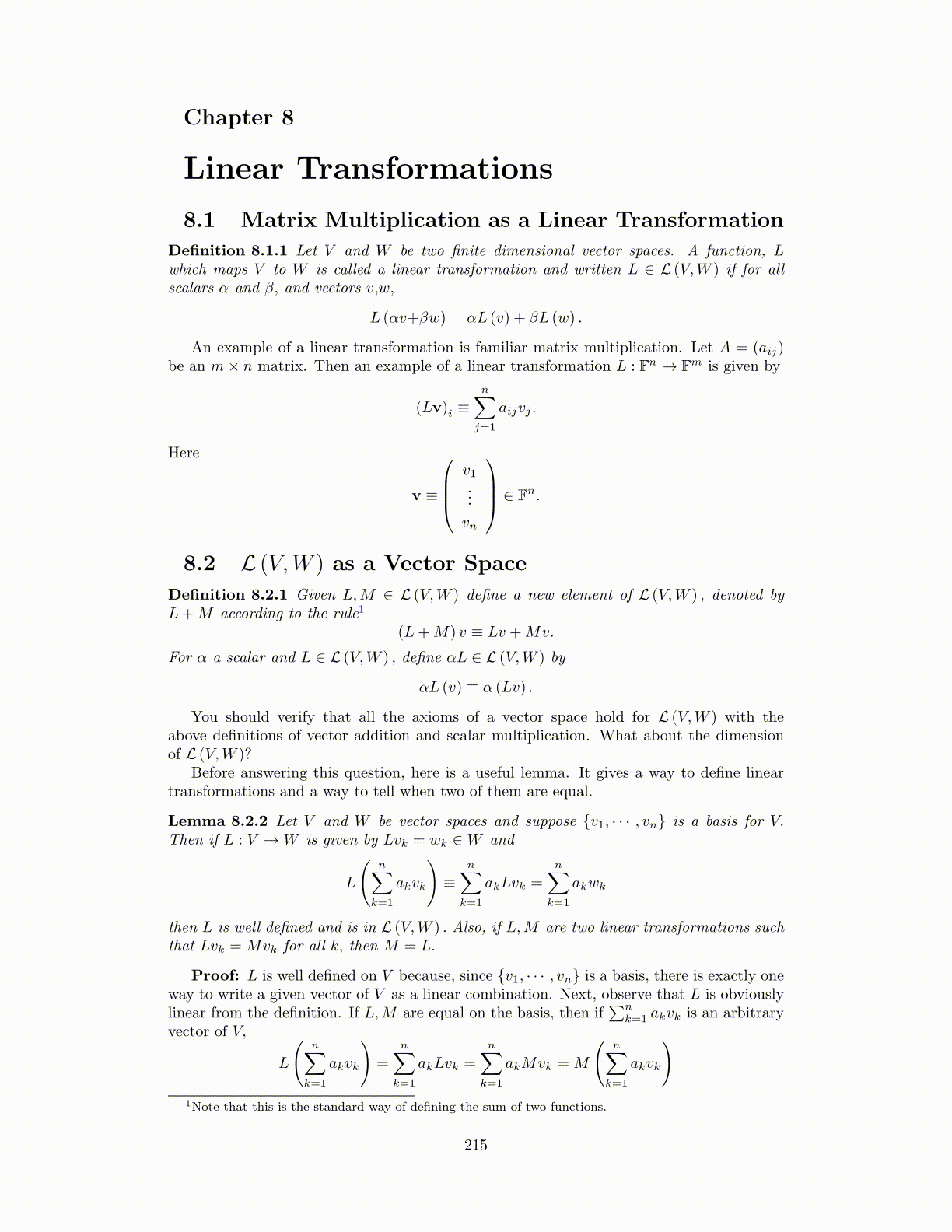
Chapter 8
Linear Transformations
8.1 Matrix Multiplication as a Linear Transformation
Definition 8.1.1 Let V and W be two finite dimensional vector spaces. A function, Lwhich maps V to W is called a linear transformation and written L ∈ L (V,W ) if for allscalars α and β, and vectors v,w,
L (αv+βw) = αL (v) + βL (w) .
An example of a linear transformation is familiar matrix multiplication. Let A = (aij)be an m× n matrix. Then an example of a linear transformation L : Fn → Fm is given by
(Lv)i ≡n∑
j=1
aijvj .
Here
v ≡
v1...
vn
∈ Fn.
8.2 L (V,W ) as a Vector Space
Definition 8.2.1 Given L,M ∈ L (V,W ) define a new element of L (V,W ) , denoted byL+M according to the rule1
(L+M) v ≡ Lv +Mv.
For α a scalar and L ∈ L (V,W ) , define αL ∈ L (V,W ) by
αL (v) ≡ α (Lv) .
You should verify that all the axioms of a vector space hold for L (V,W ) with theabove definitions of vector addition and scalar multiplication. What about the dimensionof L (V,W )?
Before answering this question, here is a useful lemma. It gives a way to define lineartransformations and a way to tell when two of them are equal.
Lemma 8.2.2 Let V and W be vector spaces and suppose {v1, · · · , vn} is a basis for V.Then if L : V →W is given by Lvk = wk ∈W and
L
(n∑
k=1
akvk
)≡
n∑k=1
akLvk =
n∑k=1
akwk
then L is well defined and is in L (V,W ) . Also, if L,M are two linear transformations suchthat Lvk =Mvk for all k, then M = L.
Proof: L is well defined on V because, since {v1, · · · , vn} is a basis, there is exactly oneway to write a given vector of V as a linear combination. Next, observe that L is obviouslylinear from the definition. If L,M are equal on the basis, then if
∑nk=1 akvk is an arbitrary
vector of V,
L
(n∑
k=1
akvk
)=
n∑k=1
akLvk =
n∑k=1
akMvk =M
(n∑
k=1
akvk
)1Note that this is the standard way of defining the sum of two functions.
215